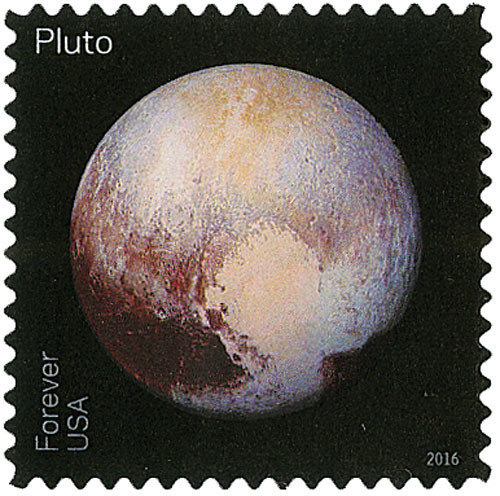
# 5077-78 - 2016 First-Class Forever Stamp - Pluto Explored!
Scientists had long dreamed of exploring Pluto. It was the issuing of a postage stamp that served as a rallying point to launch a mission to the most distant planet in our solar system.
The Voyager mission did its final flyby of Neptune in 1989. Two years later, the USPS issued a set of stamps featuring each of the planets with the spacecraft that explored it. But one stamp stood out. Picturing a lone planet, it proclaimed, “Pluto: Not Yet Explored.” The statement was taken as a challenge.
NASA created the New Horizons mission with plans to explore Pluto, its moons, and objects beyond them. The mission launched in January 2006, the same year Pluto was declared a dwarf planet. With the stamp that inspired the mission aboard, New Horizons reached Pluto on July 14, 2015. The same day, the probe began transmitting back the first batch of data, including the first up-close images we have ever seen of Pluto.
In the following months, New Horizons revealed that Pluto has been changing for much of its existence, contrary to what scientists have long believed. The images showed curious cone-shaped mountains with craters in the center and unexplained volcanic activity.
New Horizon’s next goal is to discover more of the Kuiper Belt. But Pluto’s exploration has already made the mission a resounding success.
Chandra X-Ray Observatory
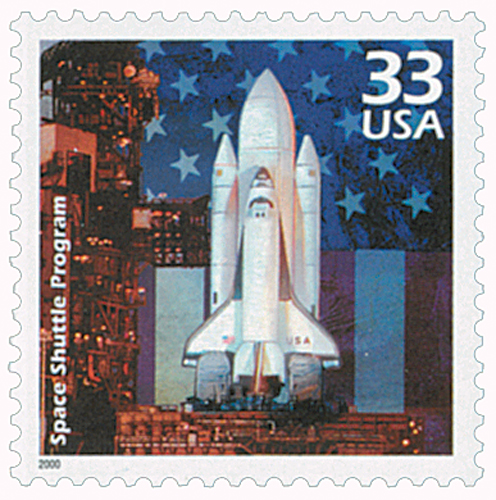
On July 23, 1999, NASA launched the Chandra X-Ray Observatory to observe x-rays from outside the Earth’s radiation field. The mission was originally intended to last just five years, but Chandra is still orbiting the Earth and making discoveries today, more than 20 years after launch.
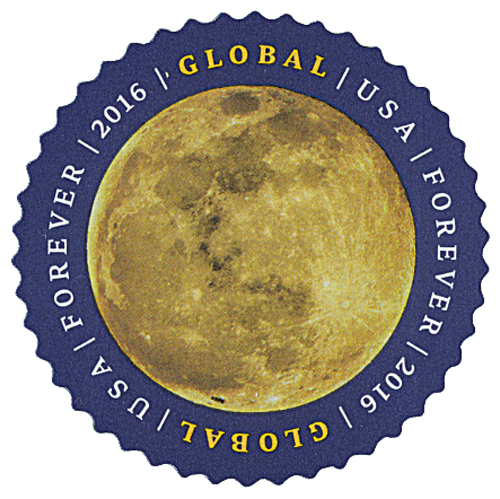
The Chandra X-Ray Observatory (called AXAF at that time) was originally proposed to NASA in 1976. It was developed to study x-rays from outside the Earth’s radiation field. It’s very hard to see x-rays from Earth-based telescopes. The telescope took over 20 years to build, and was redesigned in the 1990s. In 1998, NASA held a contest to name the telescope. More than 6,000 people around the world submitted suggestions. In the end, the telescope was named in honor of physicist Subrahmanyan Chandrasekhar, who won the Nobel Prize for his studies of neutron stars and black holes. Interestingly, Chandra is Sanskrit for moon.
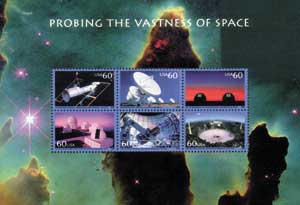
Chandra was originally scheduled to launch in December 1998 but was delayed. It was finally launched on July 23, 1999, carried into space by the Space Shuttle Columbia during its STS-93 mission. Weighing 50,162 pounds, it was the heaviest payload the shuttle ever launched.
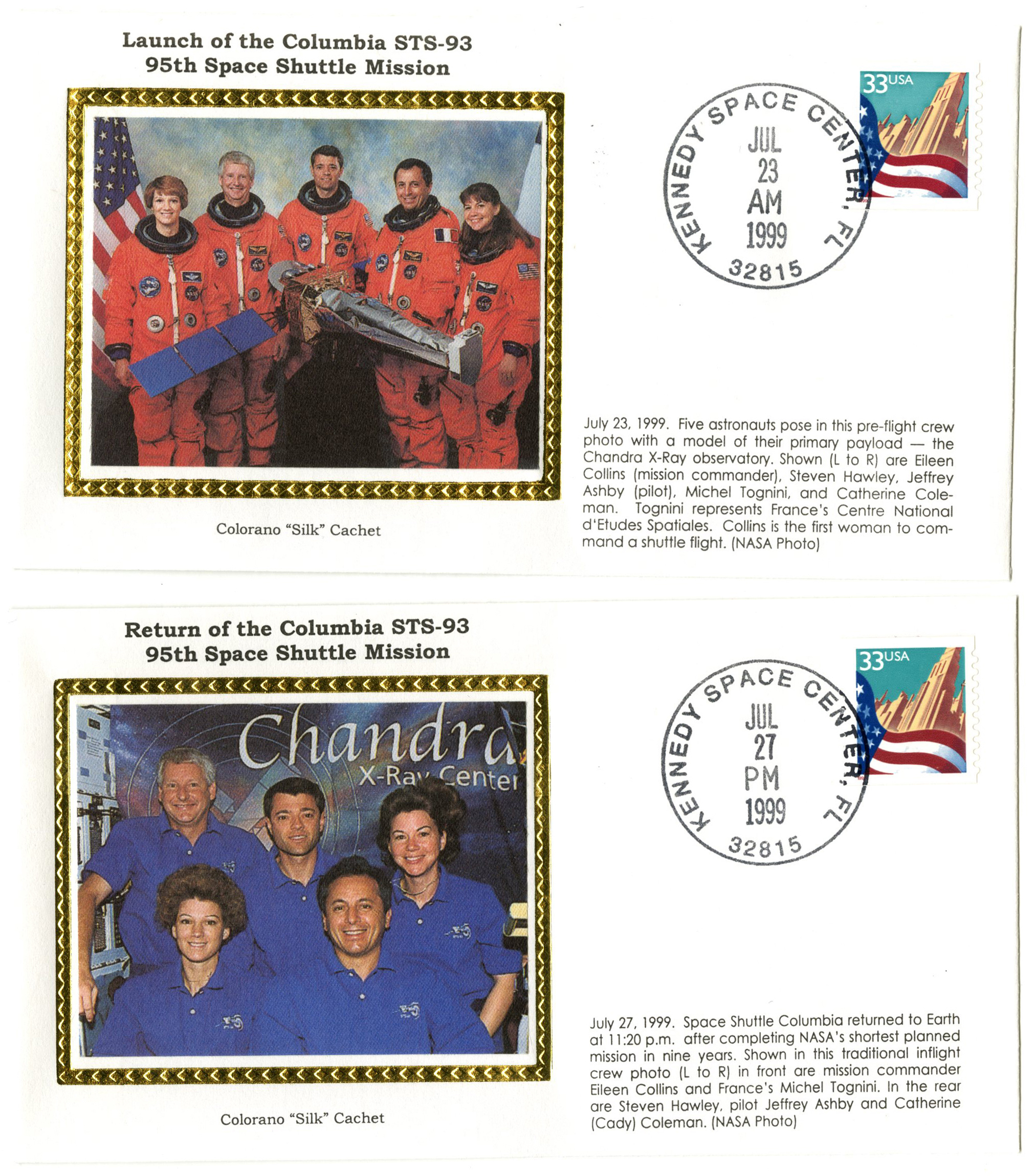
Originally, Chandra had a planned lifetime of five years, but those expectations were later raised to 10 years “based on the observatory’s outstanding results.” However, the telescope is still functioning fine more than 20 years after its launch. The observatory flies in an oval orbit around Earth, which at its furthest point takes it one-third of the way to the Moon. Chandra can detect x-rays 100 times fainter than any previous telescope.
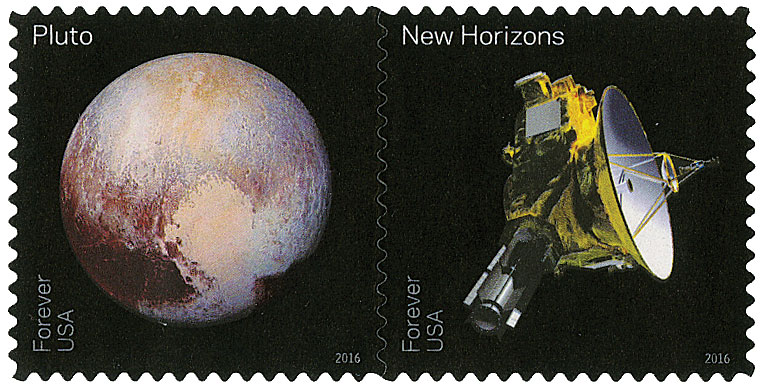
Chandra has greatly advanced the field of X-ray astronomy. X-rays are a type of electromagnetic radiation (the field is really called X-radiation). Certain X-rays can “see” through hard objects. That’s why they’re used in the medical field to see into a human body – and why they’re useful in space to view things like black holes.
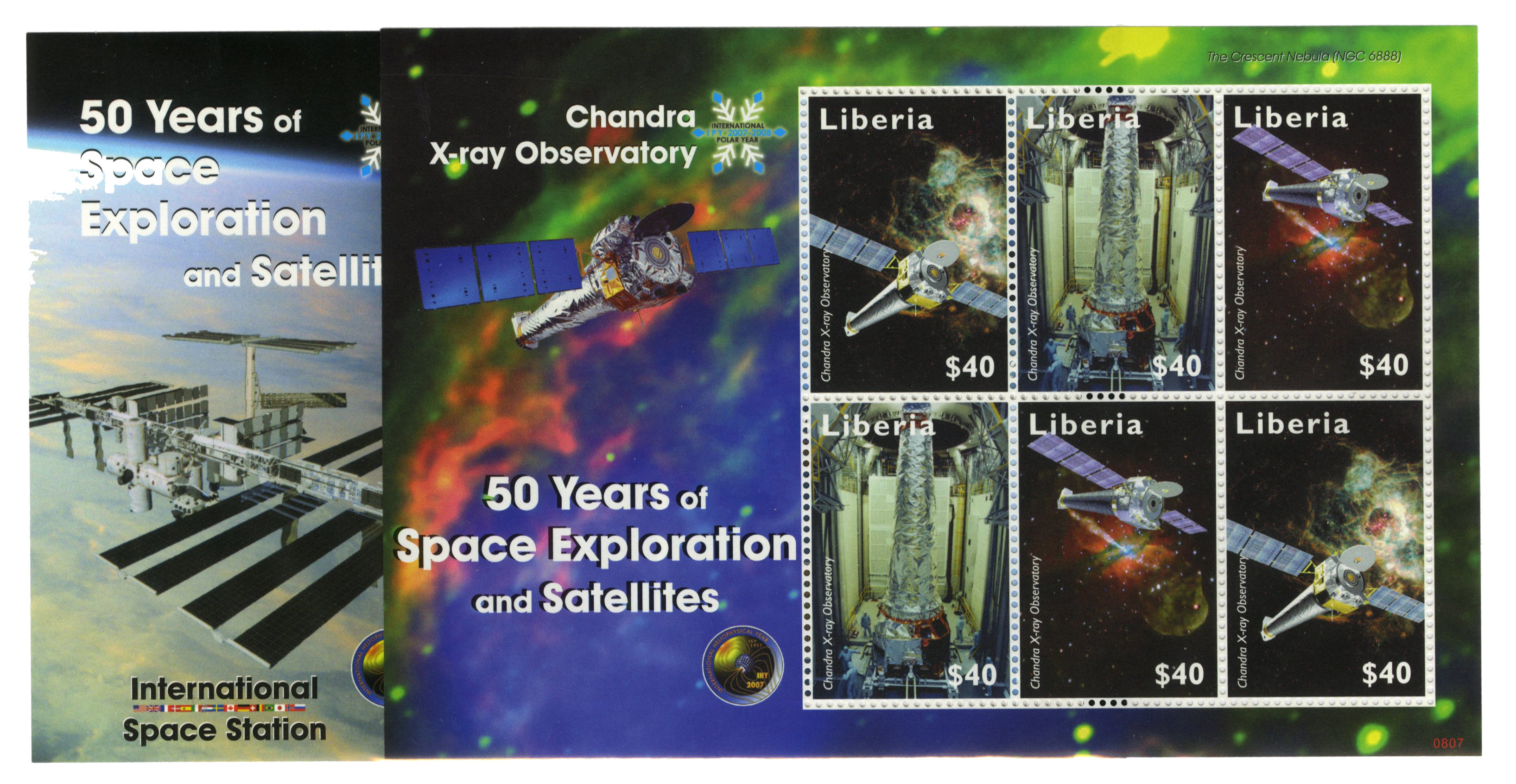
Chandra’s discoveries have given us more knowledge about black holes, which are some of the densest-known objects in the universe. Black holes are so dense that not even light can escape. The observatory also has taken images of “supernovas” – or stars exploding. A supernova can give off so much energy that it’s briefly brighter than an entire galaxy.
Chandra is one of NASA’s “Great Observatories” projects, along with the Hubble Space Telescope, the Compton Gamma Ray Observatory, and the Spitzer Space Telescope. Of the four, Compton and Spitzer are no longer working.
Scientists had long dreamed of exploring Pluto. It was the issuing of a postage stamp that served as a rallying point to launch a mission to the most distant planet in our solar system.
The Voyager mission did its final flyby of Neptune in 1989. Two years later, the USPS issued a set of stamps featuring each of the planets with the spacecraft that explored it. But one stamp stood out. Picturing a lone planet, it proclaimed, “Pluto: Not Yet Explored.” The statement was taken as a challenge.
NASA created the New Horizons mission with plans to explore Pluto, its moons, and objects beyond them. The mission launched in January 2006, the same year Pluto was declared a dwarf planet. With the stamp that inspired the mission aboard, New Horizons reached Pluto on July 14, 2015. The same day, the probe began transmitting back the first batch of data, including the first up-close images we have ever seen of Pluto.
In the following months, New Horizons revealed that Pluto has been changing for much of its existence, contrary to what scientists have long believed. The images showed curious cone-shaped mountains with craters in the center and unexplained volcanic activity.
New Horizon’s next goal is to discover more of the Kuiper Belt. But Pluto’s exploration has already made the mission a resounding success.
Chandra X-Ray Observatory

On July 23, 1999, NASA launched the Chandra X-Ray Observatory to observe x-rays from outside the Earth’s radiation field. The mission was originally intended to last just five years, but Chandra is still orbiting the Earth and making discoveries today, more than 20 years after launch.

The Chandra X-Ray Observatory (called AXAF at that time) was originally proposed to NASA in 1976. It was developed to study x-rays from outside the Earth’s radiation field. It’s very hard to see x-rays from Earth-based telescopes. The telescope took over 20 years to build, and was redesigned in the 1990s. In 1998, NASA held a contest to name the telescope. More than 6,000 people around the world submitted suggestions. In the end, the telescope was named in honor of physicist Subrahmanyan Chandrasekhar, who won the Nobel Prize for his studies of neutron stars and black holes. Interestingly, Chandra is Sanskrit for moon.

Chandra was originally scheduled to launch in December 1998 but was delayed. It was finally launched on July 23, 1999, carried into space by the Space Shuttle Columbia during its STS-93 mission. Weighing 50,162 pounds, it was the heaviest payload the shuttle ever launched.

Originally, Chandra had a planned lifetime of five years, but those expectations were later raised to 10 years “based on the observatory’s outstanding results.” However, the telescope is still functioning fine more than 20 years after its launch. The observatory flies in an oval orbit around Earth, which at its furthest point takes it one-third of the way to the Moon. Chandra can detect x-rays 100 times fainter than any previous telescope.

Chandra has greatly advanced the field of X-ray astronomy. X-rays are a type of electromagnetic radiation (the field is really called X-radiation). Certain X-rays can “see” through hard objects. That’s why they’re used in the medical field to see into a human body – and why they’re useful in space to view things like black holes.

Chandra’s discoveries have given us more knowledge about black holes, which are some of the densest-known objects in the universe. Black holes are so dense that not even light can escape. The observatory also has taken images of “supernovas” – or stars exploding. A supernova can give off so much energy that it’s briefly brighter than an entire galaxy.
Chandra is one of NASA’s “Great Observatories” projects, along with the Hubble Space Telescope, the Compton Gamma Ray Observatory, and the Spitzer Space Telescope. Of the four, Compton and Spitzer are no longer working.










